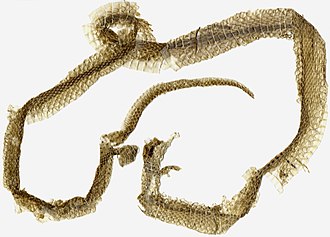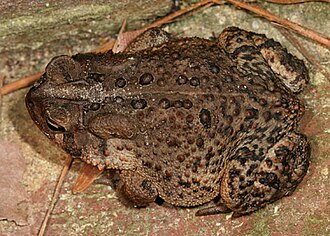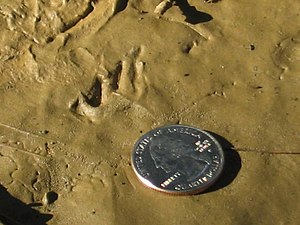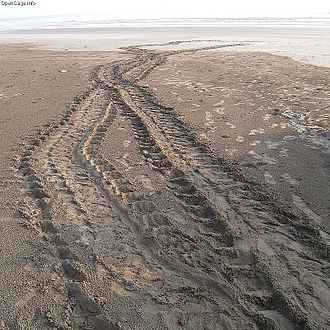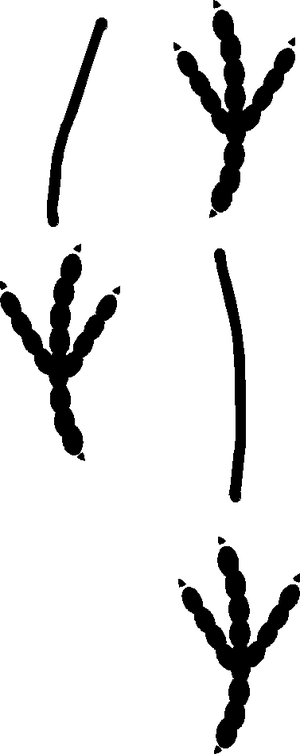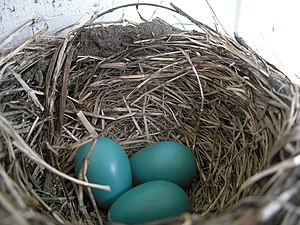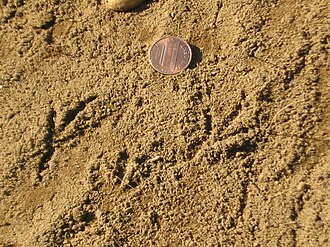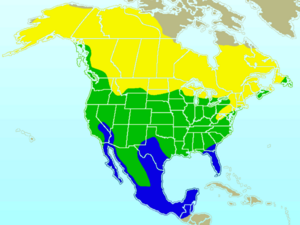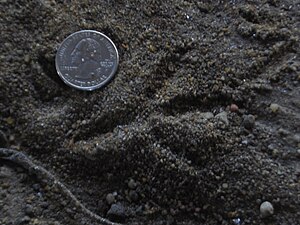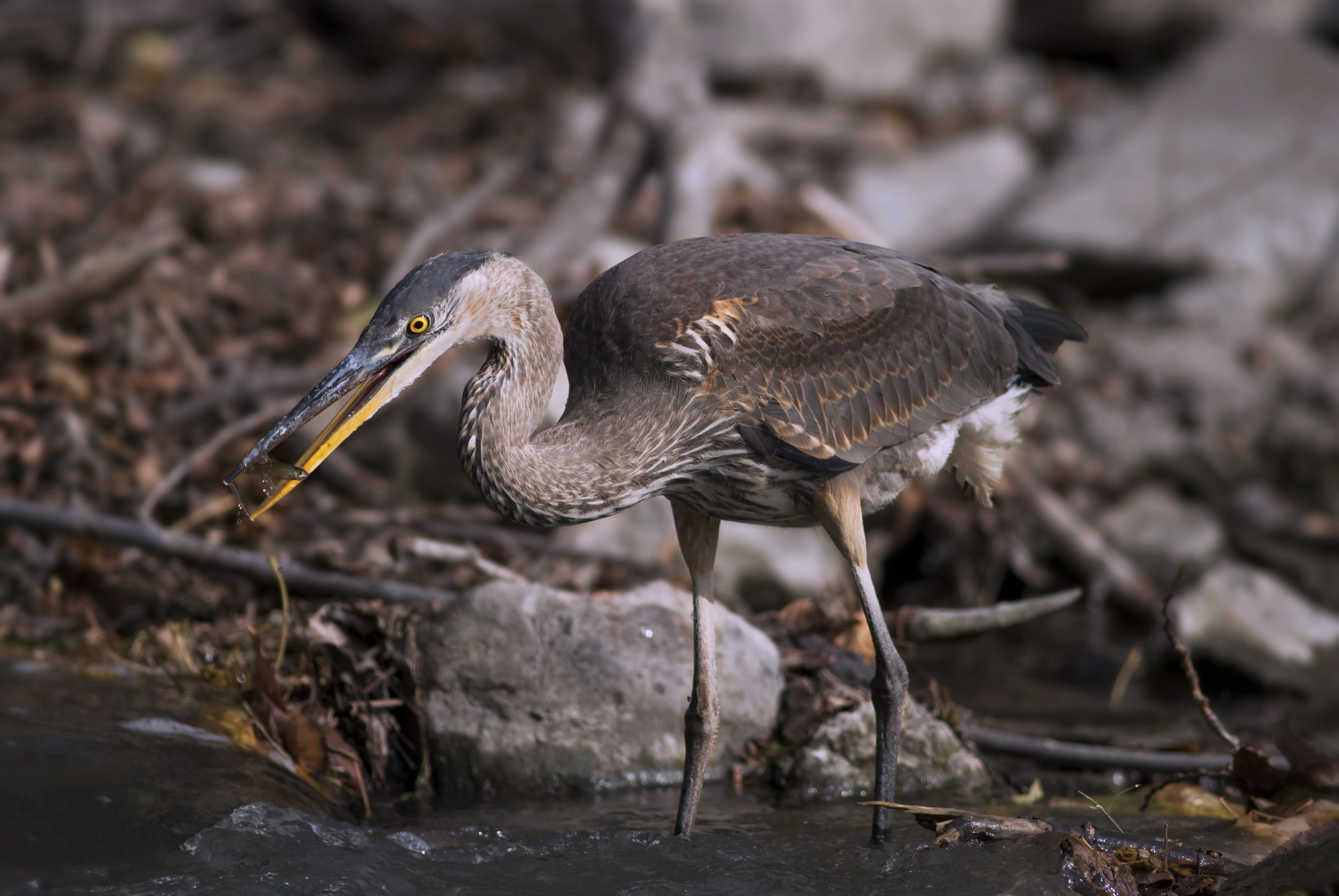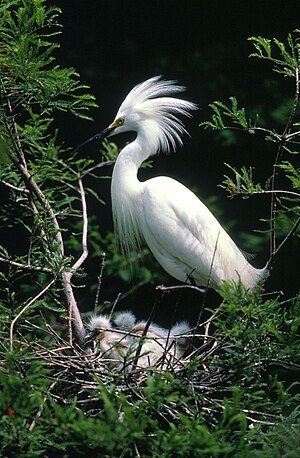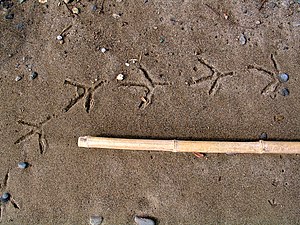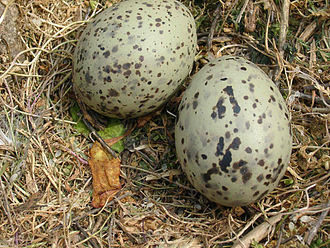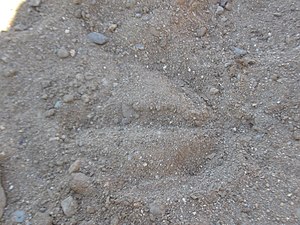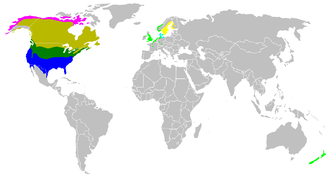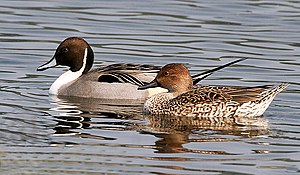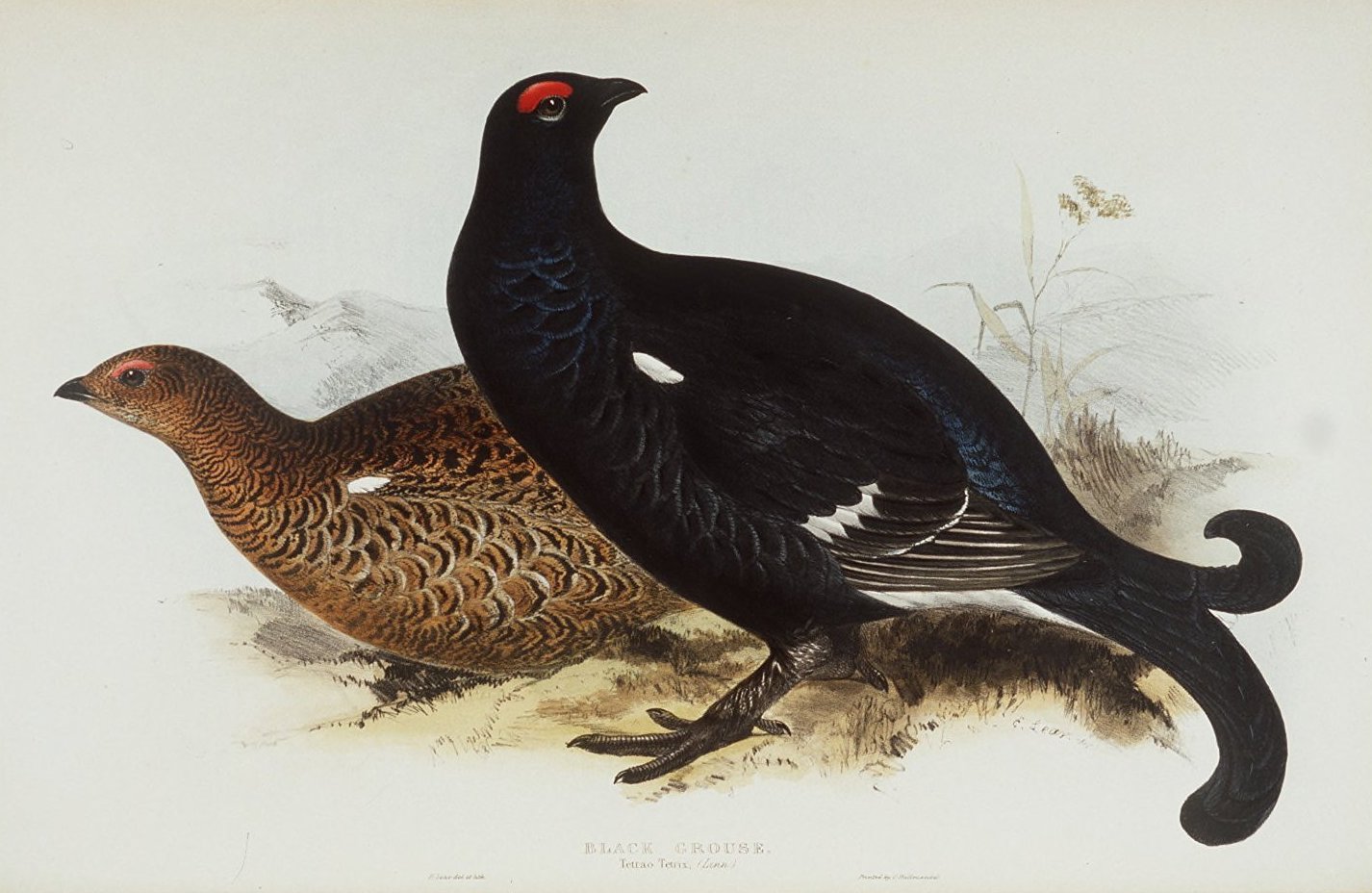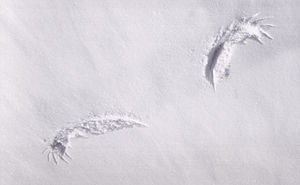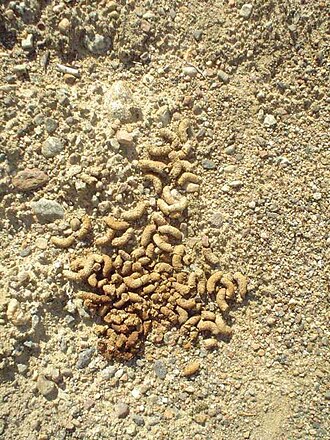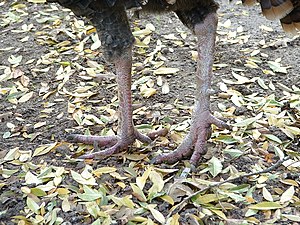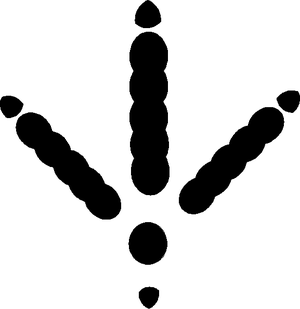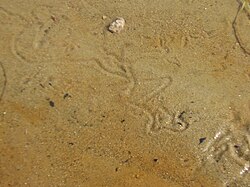Respuestas para la especialidad JA de Huellas de animales usados por la Asociación General
Nivel de destreza
1
Año
1976
Version
30.03.2025
Autoridad de aprobación
División Norteamericana
Reptiles and Amphibians
Snakes
Snake (Serpentes)
Usage:
- {{Animal sign
- | all the parameters ...
- }}
Example: Template loop detected: Template:Animal sign </noinclude>
Frogs
Frogs and Toads (Anura)
Usage:
- {{Animal sign
- | all the parameters ...
- }}
Example: Template loop detected: Template:Animal sign </noinclude>
Turtles
Turtle (Testudines)
Usage:
- {{Animal sign
- | all the parameters ...
- }}
Example: Template loop detected: Template:Animal sign </noinclude>
Birds
Crows and Ravens
Crows and Ravens (Corvus spp.)
Crows have three toes that point forward and one that points backwards. The front middle toe curves inward and like the rear toe, is longer than the two on the side. The tracks are typically between 5-8cm
Usage:
- {{Animal sign
- | all the parameters ...
- }}
Example: Template loop detected: Template:Animal sign </noinclude>
American Robin
American Robin (Turdus migratorius)
Usage:
- {{Animal sign
- | all the parameters ...
- }}
Example: Template loop detected: Template:Animal sign </noinclude>
Pigeons and Doves
Pigeons and Doves (Columbidae)
Usage:
- {{Animal sign
- | all the parameters ...
- }}
Example: Template loop detected: Template:Animal sign </noinclude>
Heron
Heron (Ardeidae)
Usage:
- {{Animal sign
- | all the parameters ...
- }}
Example: Template loop detected: Template:Animal sign </noinclude>
Herring Gull
Herring Gull (Larus argentatus)
Usage:
- {{Animal sign
- | all the parameters ...
- }}
Example: Template loop detected: Template:Animal sign </noinclude>
Canada Goose
Canada Goose (Branta canadensis)
Usage:
- {{Animal sign
- | all the parameters ...
- }}
Example: Template loop detected: Template:Animal sign </noinclude>
Duck
Duck (Anatidae)
Usage:
- {{Animal sign
- | all the parameters ...
- }}
Example: Template loop detected: Template:Animal sign </noinclude>
Grouse
Grouse (Tetraoninae)
Usage:
- {{Animal sign
- | all the parameters ...
- }}
Example: Template loop detected: Template:Animal sign </noinclude>
Turkey
Turkey (Meleagris gallopavo)
Usage:
- {{Animal sign
- | all the parameters ...
- }}
Example: Template loop detected: Template:Animal sign </noinclude>
Animals leave many indications that they were present. These are collectively called sign. Sign includes:
- Tracks
- Not only footprints, but marks left on the ground by the tail or by other body parts. Beavers, muskrats, mice, and rats all leave tail marks on the ground.
- Scat
- Scat is another word for animal droppings or manure.
- Fur and antlers
- Animals may leave bits of fur behind if it gets caught in a tree's bark, or in thorns. In the fall deer drop antlers.
- Cuttings
- Cuttings are things such as acorn shells which have been nibbled on. Deer and squirrel often leave them behind.
- Scratches on trees
- Bears, members of the cat family, and other predators will sharpen their claws on tree trunks. Sometimes they will do this to mark their territory. Porcupines will eat the bark all the way around the trunk of a conifer, often killing it.
- Damage to trees
- beavers especially, but also other animals will damage trees by breaking branches, chewing twigs, and gnawing bark.
- Scent Posts
- Many animals mark their territory by urinating on trees or other prominent items. If you are walking through the woods and smell a strong musky odor, look around — you may find other sign.
- Carcasses
- Once a predator has had its fill of a kill, it will leave the carcass. Some animals will guard their carcasses though so they can feed on them again after they've digested some of the previous meal, so be careful if you find one.
Rabbit vs Squirrel Tracks
Rabbits leave a distinctive pattern when they bound along. The front feet are thrown between the hind feet, but one of them is almost invariably thrown farther back, and the two forefeet often print one behind the other (though sometimes they print side-by-side). A rabbit's hind feet leave larger oval-shaped prints about the size of a man's thumbprint. Since they use the hind feet rather than their forefeet to leap forward, they will push out some material behind them. It may be difficult to make out individual toes in a rabbit print.
Squirrels are also bounders, and like the rabbit, they throw both forefeet between their hind feet. But unlike the rabbit, the squirrel's forefeet generally print side-by-side. The hind feet should print five toes (four finger-like and one thumb-like) and no claws. The forefeet should print only four toes.
In general, a rabbit's pads are shaped like an oval while a squirrel's pads are shaped like a human hand.
If you're lucky enough to find a large set of tracks in the snow, and they lead to the base of a tree, it is almost certainly a squirrel, as rabbits cannot climb trees. The only way a rabbit could leave such a trail is if it had been abducted by aliens (or by an owl!)
Dog vs Cat Tracks
Unlike dogs, cats can retract their claws, and they do so when walking. Therefore, you should expect to find claw marks present in dog tracks, but absent in cat tracks. In general dogs tracks are larger than cat tracks, but you cannot rely on this alone, as there are some very small dogs and some very large cats.
Some species of mammal and some species of insect leave scent trails to communicate with others of their species. Canines, cats, deer, moose, alpaca and llama, and others will mark their territory with urine.
Ants lay down pheromone trails that lead to food sources. If you have ever seen a column of ants scurrying about in single file, you can be sure they are following a scent trail.
Most perching birds (passerines) hop, though many can both hop and walk (such as ravens, blackbirds, and robins). Jays, sparrows, cardinals, titmice, nuthatches, finches, and many others hop. The tracks of hopping birds often print side-by-side as they tend to keep their feet together as they hop.
Walking birds include crows, most waterfowl and shore birds (sandpipers, egrets, herons, etc.), and most game birds (wild turkeys, geese, ducks, grouse, doves, pigeons, etc.). The tracks of walking birds typically alternate left to right as they lift their feet one at a time.
- Feathers
- Droppings
- Nests
- Birdsongs (if you can hear them, they must be present!)
- Eggs or eggshells
- Pellets: Birds of prey regurgitate the indigestible portions of their meals. Birds have no teeth so they rip their prey apart with their beaks and swallow large chunks at a time. Then they digest the soft portions (such as meat) leaving the hair and bones behind to collect into pellets. They cough up these pellets which can be found by the astute observer.
Canadian geese can be identified from a great distance by their distinctive V formation.
Tracks for these animals are described in an earlier requirement. Perhaps the easiest of these three to find are the tracks of the frog. Find a pond where frogs live, and smooth the mud as described in requirement 4. Another technique is to visit a frog pond and watch as they leap into the water at your approach. Look carefully at the spot from which they leap, and you may be able to see the track. If you have any Pathfinders brave enough, have one capture a frog, and then gently transport it to a muddy area where it can leave tracks. Put it in the center of this area and observe the tracks it makes. Recapture the frog and return it to its home when you are finished.
When most people think of mollusks, they think of clams and mussels. For this honor, it is beneficial to remember that snails and slugs are also members of the mollusk family, especially since they leave easily followed trails.
The best time to find snail or slug tracks is in the early morning. Look on the sidewalk near flower beds for the tell-tale slimy trails these creatures leave as they slip along. As these slime trails dry, they turn white and flaky, often curling at the edges.
That said, it is also possible to find the tracks of clams and mussels. The photo on the right shows the tracks left by a mussel in shallow water (about 10 cm![]() deep) at the edge of a fresh water pond.
deep) at the edge of a fresh water pond.
Find a place where you have seen earthworms in the past, preferably where the dirt is bare (i.e., no grass). Soak the area with water to drive the worms out of the ground. Worms need air, so when it rains (or when a Pathfinder soaks the ground with a hose), they will come to the surface. They might not come out immediately, so you should plan to return a day later to look for tracks in the mud you've made.
Moles are burrowing rodents, and if you have them in your yard, it is not difficult to see where they have been. As they tunnel along, they raise the earth above their tunnels. At the end of the tunnel you may find a hole surrounded by a "mole hill".
References
- http://www.bear-tracker.com/
- The Complete Tracker by Len McDougall, 1997. ISBN 156731-326-4
- Missouri Department of Conservation

